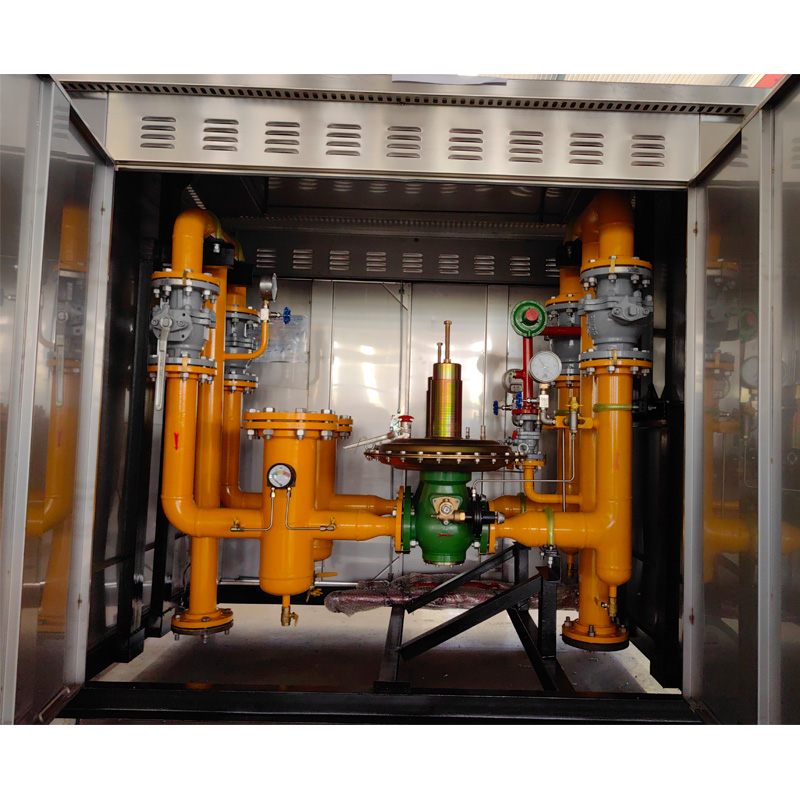
Nov . 11, 2024 10:59
Back to list
مزلقة تنظيم الضغط
Understanding Pressure Control Mechanisms The Role of Pressure Regulators
Pressure control is an essential aspect of various systems, ranging from industrial processes to household appliances. One of the key components that facilitate effective pressure control is the pressure regulator. This article delves into the significance of pressure regulators, their operational mechanisms, and their applications across different sectors.
The Need for Pressure Control
In many systems, maintaining optimal pressure is crucial for safe and efficient operation. Excessive pressure can lead to equipment failure, safety hazards, and inefficiencies. Conversely, inadequate pressure can impair functionality, leading to suboptimal performance. Therefore, pressure control mechanisms, such as pressure regulators, play a vital role in ensuring that systems operate within designated pressure ranges.
What is a Pressure Regulator?
A pressure regulator is a device designed to maintain a consistent output pressure in a system, regardless of variations in the input pressure or flow conditions. It works by automatically adjusting the flow of a pressurized gas or fluid to keep the pressure steady at a predefined level. Pressure regulators are typically used with gases, liquids, or steam and are found in various applications, from medical devices to gas distribution systems.
How Pressure Regulators Work
Pressure regulators generally consist of a controlling element, a spring, and a diaphragm. The controlling element is crucial as it responds to changes in pressure, allowing or restricting flow accordingly. When the upstream pressure increases, the diaphragm moves against the spring force, adjusting the orifice size and subsequently decreasing the flow rate to lower the output pressure.
Conversely, if the downstream pressure drops, the diaphragm moves in the opposite direction, allowing more flow through the regulator to maintain the desired pressure level. This automatic adjustment ensures that the system remains stable, even if external conditions change.
.
Pressure regulators come in various designs, each suited for specific applications
مزلقة تنظيم الضغط

1. Single-Stage Regulators These are typically used in low-pressure applications. They provide good regulation for consistent flow but can struggle with larger pressure fluctuations.
2. Two-Stage Regulators These are ideal for varying pressure inputs. They feature two regulating elements, which help maintain a more constant output pressure even with significant changes in the input supply.
3. Back Pressure Regulators These are used to maintain pressure in a system by diverting excess fluid back to the supply line, making them ideal for processes that require precise pressure control.
Applications of Pressure Regulators
The applications of pressure regulators are vast and varied
- Industrial Processes Many manufacturing processes rely on precise pressure control to ensure product quality and operational safety. Regulators are used in pneumatic systems, boilers, and hydraulic equipment.
- Medical Devices In the medical field, regulators are critical for administering gases like oxygen and anesthetics, ensuring patient safety and compliance with medical standards.
- Household Appliances Everyday devices like gas stoves and water heaters utilize pressure regulators to ensure proper functionality and safety.
- Automotive Systems Pressure regulators are vital in fuel systems, ensuring that fuel injection occurs at the correct pressure for optimal engine performance.
Conclusion
Pressure regulators play an indispensable role in a wide array of applications, ensuring that systems operate safely and efficiently. By automatically adjusting flow to maintain consistent pressure, these devices safeguard against potential hazards associated with pressure fluctuations. As technology progresses, the design and efficiency of pressure regulators are likely to improve further, enhancing their applications in various fields. Understanding these mechanisms is crucial for anyone involved in system design, operation, or maintenance, highlighting the importance of effective pressure control in modern engineering and everyday life.
Latest news
-
Safety Valve Spring-Loaded Design Overpressure ProtectionNewsJul.25,2025
-
Precision Voltage Regulator AC5 Accuracy Grade PerformanceNewsJul.25,2025
-
Natural Gas Pressure Regulating Skid Industrial Pipeline ApplicationsNewsJul.25,2025
-
Natural Gas Filter Stainless Steel Mesh Element DesignNewsJul.25,2025
-
Gas Pressure Regulator Valve Direct-Acting Spring-Loaded DesignNewsJul.25,2025
-
Decompression Equipment Multi-Stage Heat Exchange System DesignNewsJul.25,2025

